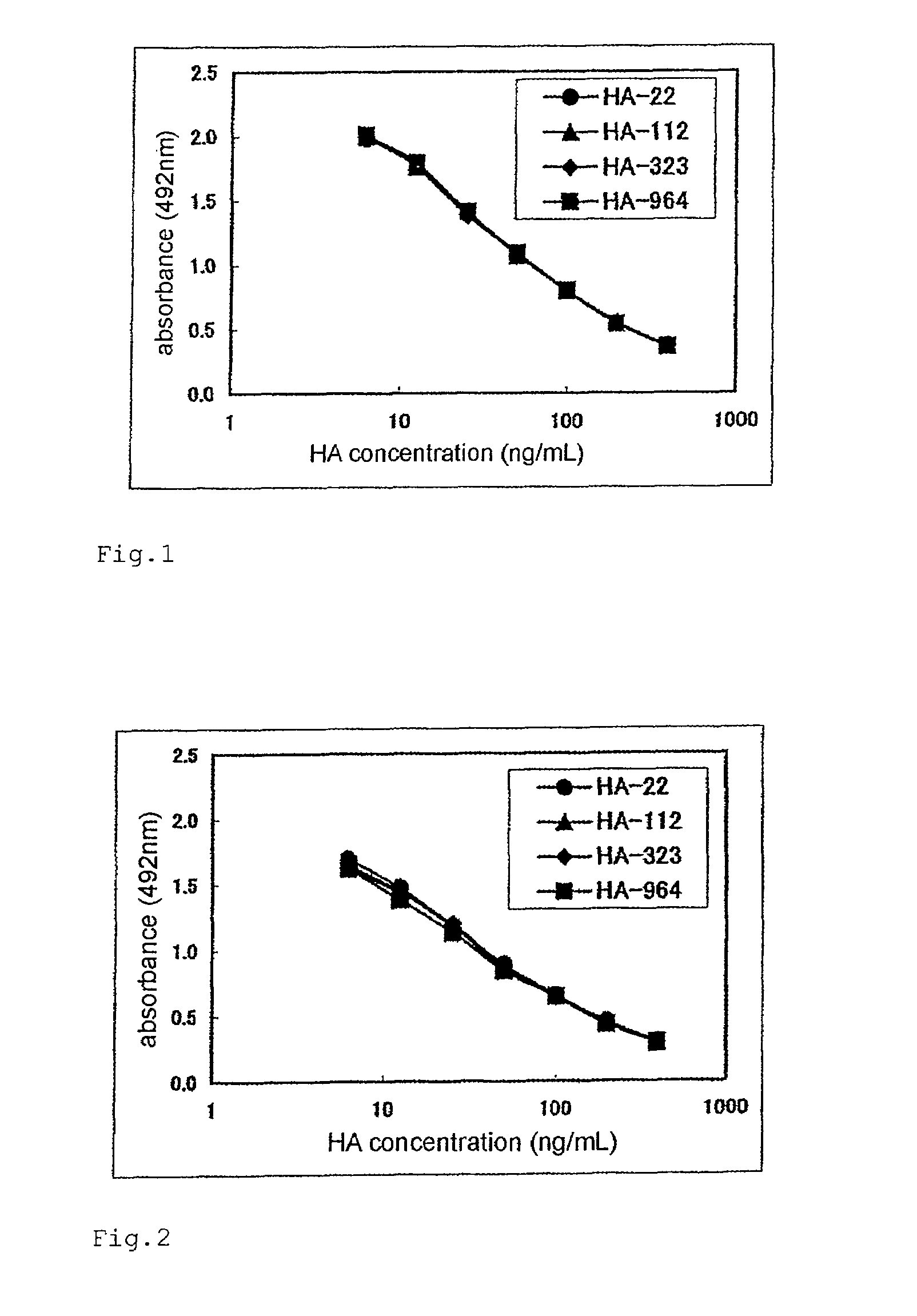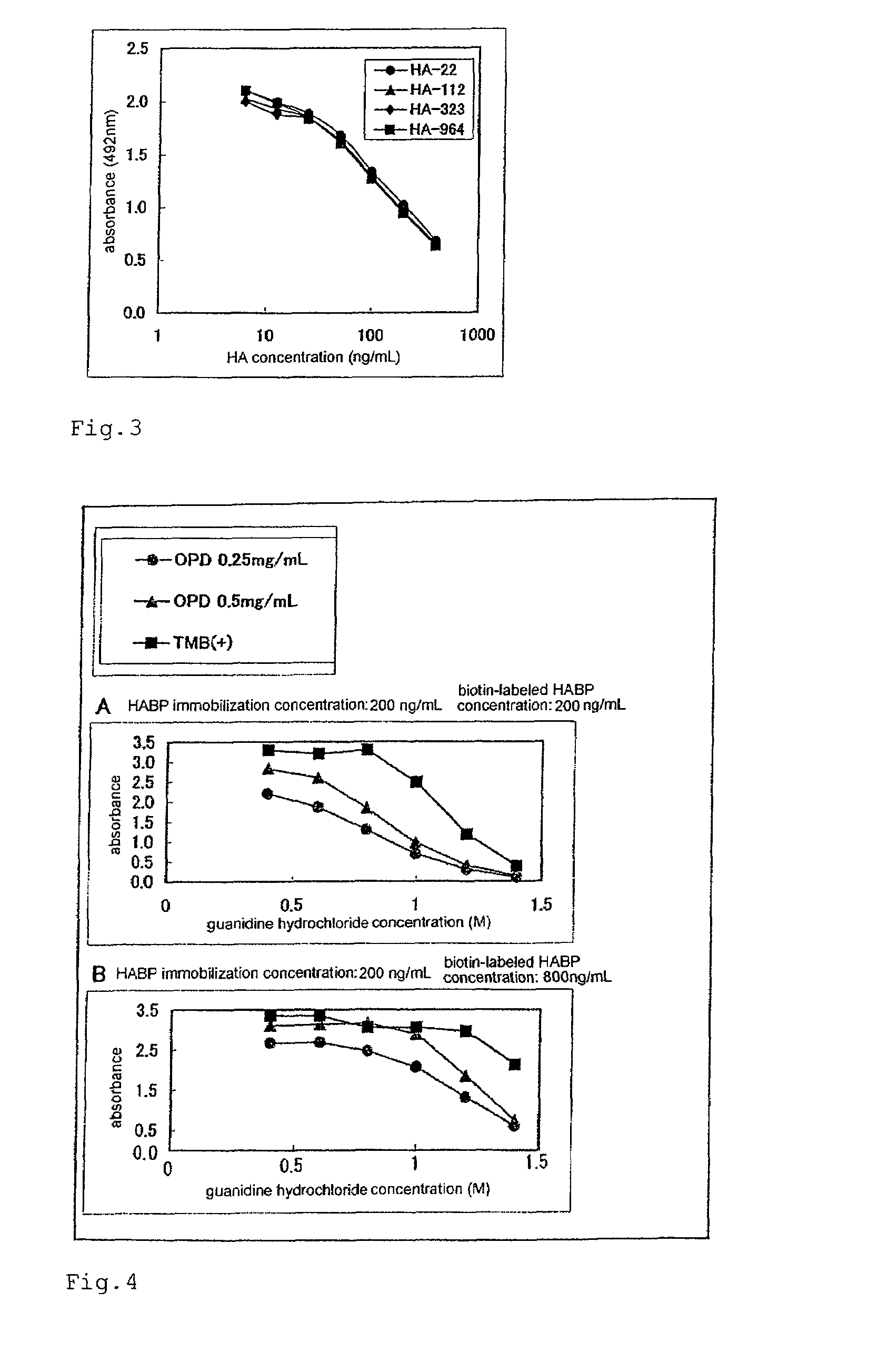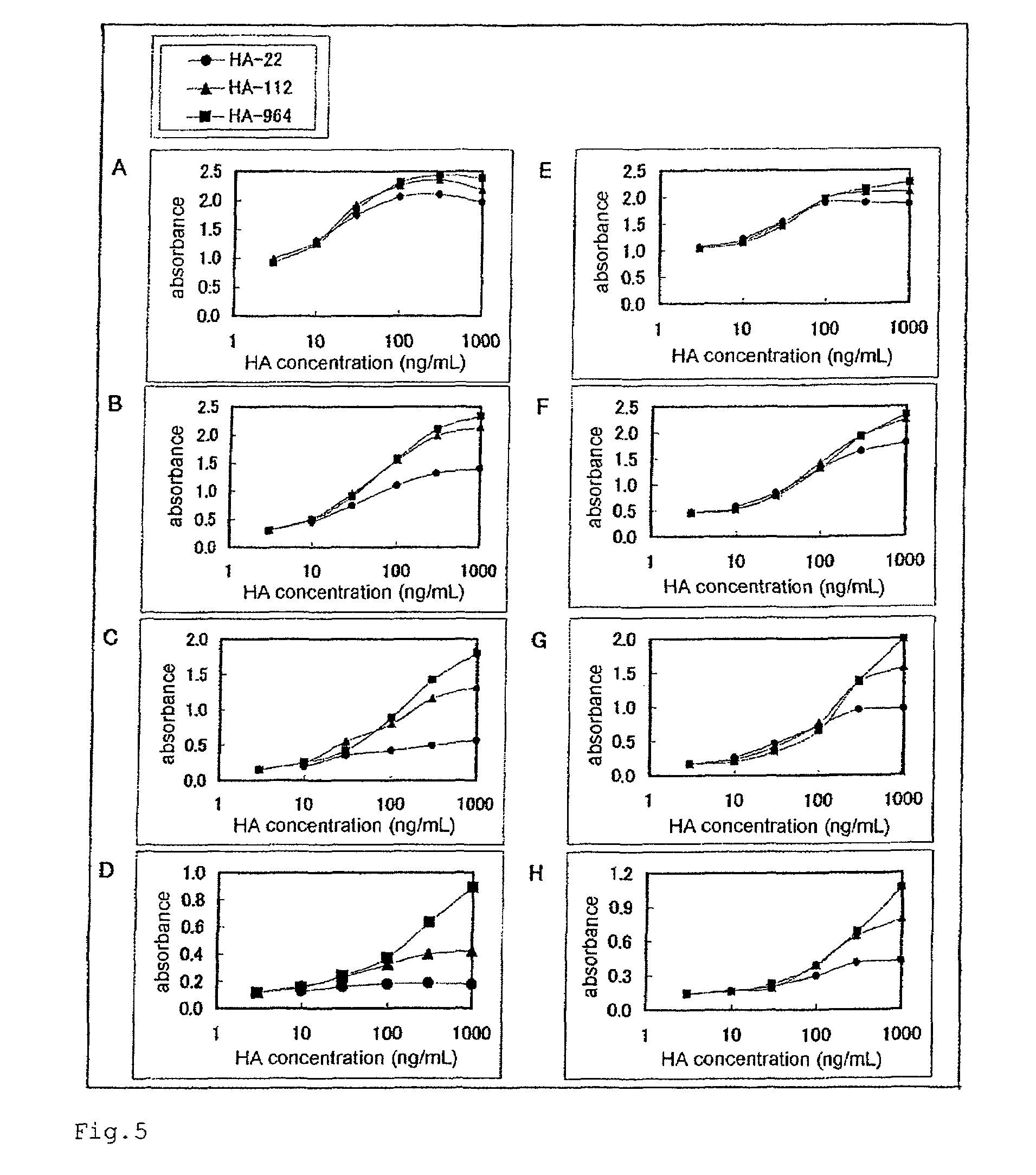Method for determination of molecular weight of hyaluronic acid
a technology of hyaluronic acid and molecular weight, which is applied in the field of measuring the molecular weight of hyaluronic acid, can solve the problems of time-consuming manipulation, measurement cannot be performed, and ha-specific measurement cannot be achieved if, so as to achieve the effect of short tim
- Summary
- Abstract
- Description
- Claims
- Application Information
AI Technical Summary
Benefits of technology
Problems solved by technology
Method used
Image
Examples
example 1
Measurement of Molecular Weight of HA by GPC Method
[0211]The HA derived from cock's comb was used to prepare HA standards for GPC. The molecular weight of the HA was made low by the above method. The resultant was purified with ethanol precipitation to afford 9 kinds of standards (HA-MWSTD-1 to HA-MWSTD-9). Those molecular weights were determined by a light scattering method, which was a known method.
[0212]The concentration of each of 9 kinds of the standards for GPC and 10 kinds of the test samples as described above was adjusted to about 100 μg / mL using 0.2 M NaCl, followed by the analysis under the following conditions. The molecular weight of the standards and the dissolution time at the dissolution peak position were plotted on X- and Y-axis, respectively, to prepare the standard curve. The standard curve was used to calculate the peak molecular weight of the test samples from the dissolution peak position for the test samples.
[0213]Measuring Device[0214]Column oven: CO-8025 (m...
example 2
Quantitative Measurement of HA Concentration by HPLC Method
[0227]For samples A to J each of which was measured for the molecular weight by the GPC method in Example 1, the concentration of HA was quantitatively measured by the HPLC method as described below.
[0228]Standard
[0229]An HA unsaturated disaccharide standard (manufactured by SEIKAGAKU CORPORATION) was dissolved in purified water, and the resultant was measured with a spectrophotometer (U-530DS; manufactured by JASCO Corporation) in which the ultra violet absorption at a wavelength of 232 nm was calibrated. The concentration was determined on the basis of the substance having the molecular extinction coefficient of 5.7. The substance was diluted correctly using a calibrated electronic scale (AT-250; manufactured by Mettler Toledo International Inc.) to prepare the standard solution for HPLC quantitative measurement having a concentration of 2 μg / mL.
[0230]Measuring Device[0231]Pump: PU-2080 (manufactured by Jasco Corporation)[...
example 3
Measurement of HA Concentration in Sample
(Step (1))
[0246]Samples B (HA-964), E (HA-323), H (HA-112), and J (HA-22), each of which was measured for the molecular weight by the GPC method in Example 1 and was measured for the concentration of HA by the HPLC method in Example 2, were adjusted to the concentrations of 0, 6.25, 12.5, 25, 50, 100, 200, and 400 ng / mL. The quantitative test for HA was performed by the competitive ELISA method according to the following procedure.
[0247]HA-BSA was dissolved in PBS at a concentration of 100 μg / mL. To each well of a 96-well plate, 100 μL each of the resultant was added and left to stand at 4° C. overnight to carry out the immobilization. After that, each well was washed three times with 300 μL of PBS. Each well was added with 200 μL of a PBS solution containing 1% BSA and left to stand at room temperature for 2 hours to carry out the blocking. Then, each well was washed three times with 300 μL of a washing solution. Each well was added with 50 ...
PUM
| Property | Measurement | Unit |
|---|---|---|
| concentration | aaaaa | aaaaa |
| concentration | aaaaa | aaaaa |
| concentration | aaaaa | aaaaa |
Abstract
Description
Claims
Application Information
 Login to View More
Login to View More - R&D
- Intellectual Property
- Life Sciences
- Materials
- Tech Scout
- Unparalleled Data Quality
- Higher Quality Content
- 60% Fewer Hallucinations
Browse by: Latest US Patents, China's latest patents, Technical Efficacy Thesaurus, Application Domain, Technology Topic, Popular Technical Reports.
© 2025 PatSnap. All rights reserved.Legal|Privacy policy|Modern Slavery Act Transparency Statement|Sitemap|About US| Contact US: help@patsnap.com



